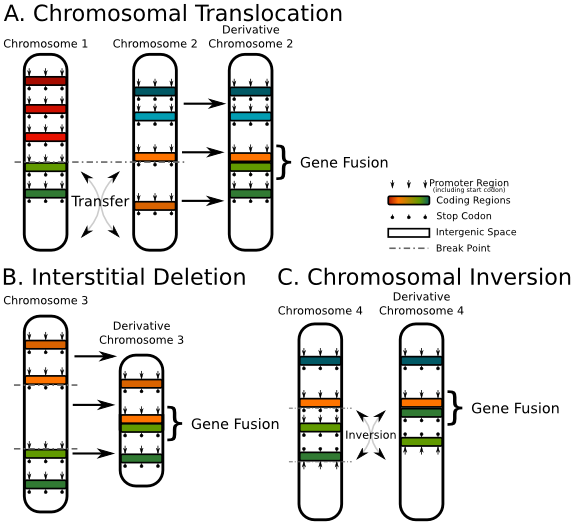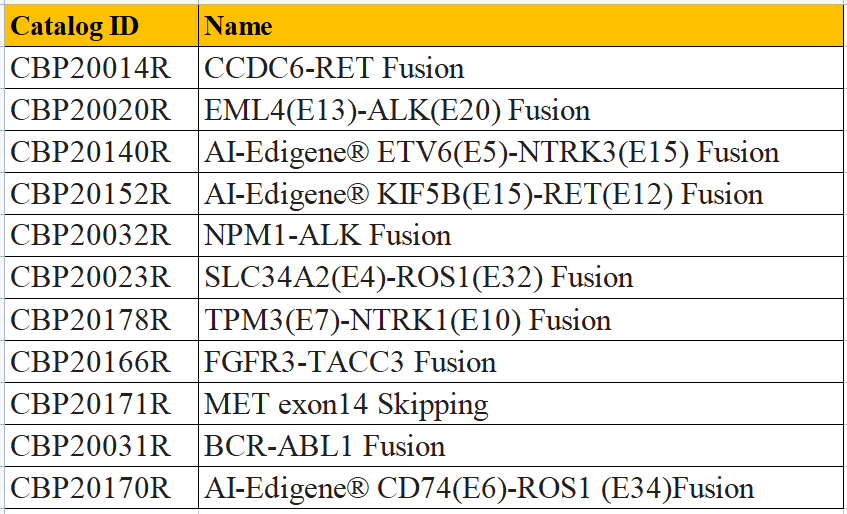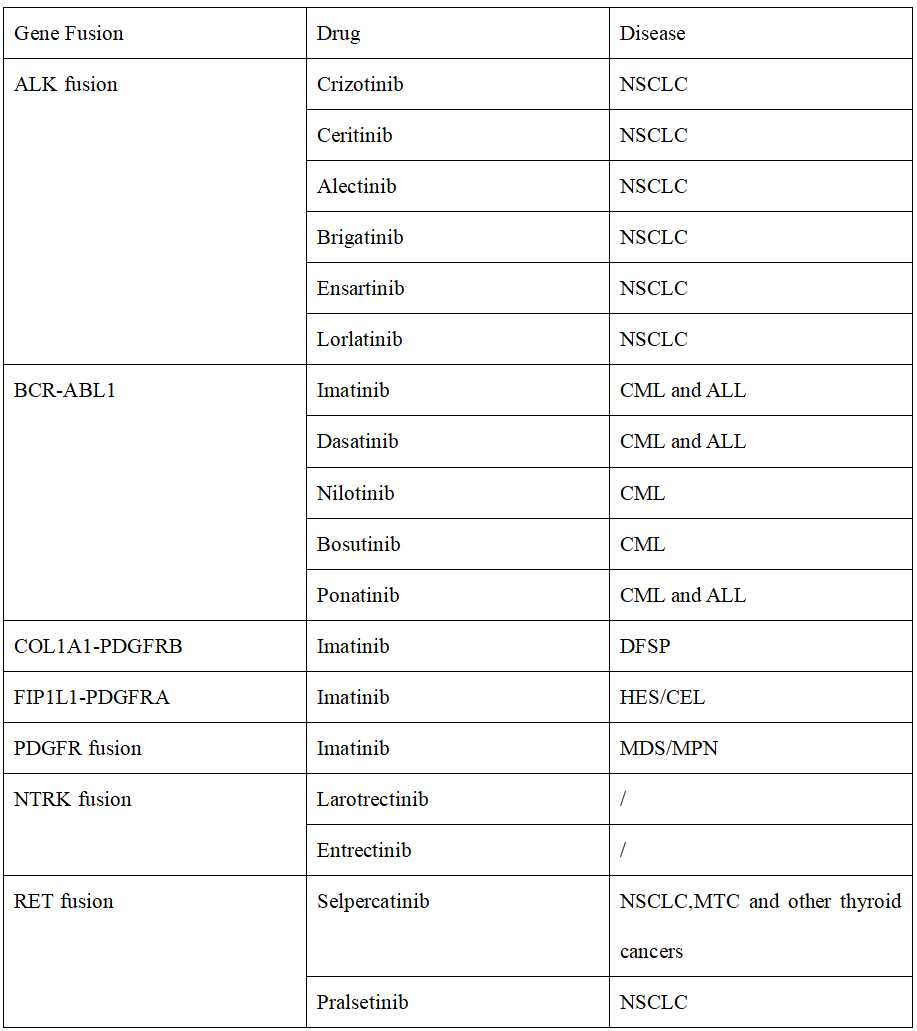[Product Promotion] Tumor Fusion Gene Detection and Targeted Therapy
Gene fusion refers to the fusion of part or all of the sequences of two different genes due to a mechanism (such as genome mutation) to form a new gene.

Fusion genes are produced by chromosomal rearrangements, including chromosomal translocations, insertions, inversions, and deletions (unbalanced rearrangements).
● Chromosomal Translocation, chromosomal translocation. As shown in Figure A above, the two fragments on chromosomes 1 and 2 are cross-exchanged, resulting in the fusion of the light green gene on chromosome 1 and the orange gene on chromosome 2;
● Interstitial deletion. As shown in the figure above, the segment between the orange gene and the light green gene on chromosome 3 is deleted, which eventually leads to the fusion of these two genes;
● Chromosomal Inversion, chromosome inversion. For example, the fragment between the orange gene and the dark green gene on chromosome 4 is inverted, which eventually leads to the fusion of the orange gene and the light green gene.
Fusion gene detection method
Accurate targeted tumor therapy relies on precise detection of fusion genes. Currently, the main detection methods include fluorescence in situ hybridization (FISH), polymerase chain reaction (PCR), immunohistochemistry (IHC) and high-throughput sequencing (NGS), etc. Several methods. Detecting at the level of DNA, RNA, and protein, these detection methods coexist with their pros and cons, and it is often necessary to combine multiple detection methods to make comprehensive judgments.
Fusion Gene Diagnostic Standard
In order to ensure the accuracy of genetic testing, we can provide more than two hundred fusion gene diagnostic standards, in various forms of gDNA, cDNA, RNA, FFPE, etc., to meet different experimental needs and provide references for various diagnostic kits. Such as PCR, NGS, IHC, etc., to meet the qualitative and quantitative needs.

Fusion genes are an important cause of tumors. The most common fusion genes in solid tumors are tyrosine kinases (such as ALK, ROS1 and RET, etc.). Fusion mutations lead to activation of downstream cell signaling pathways and cell proliferation indefinitely. Fusion genes are not only the "devil" that causes tumors, but also the angels of targeted cancer treatment. Targeted inhibitors of multiple fusion genes have excellent effects in clinical tumor treatment and are the main force in tumor targeted therapy. The US FDA (Food and Drug Administration) has approved some drugs for specific gene fusions to treat corresponding cancers. The details are shown in the following table (organize some data):

Kinase stable cell line
Focusing on drug research on kinase targets, we have developed hundreds of Ba/F3 kinase stable cell lines, and introduced and expressed various kinase genes to drive Ba/F3 to evaluate the targeted inhibitory effects of drugs on kinases.


